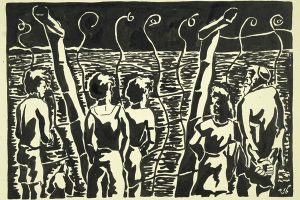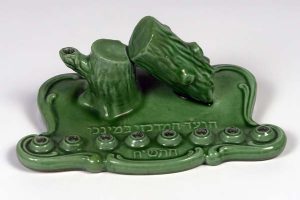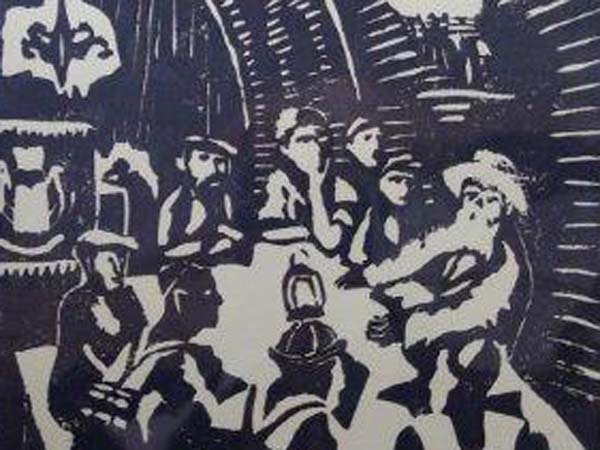
How a Recent Grant Helped Uncover a Rare Artifact’s Provenance
JDC History Revealed
The JDC Archives was honored to receive a 2017 preservation assistance grant from the National Endowment for the Humanities. The grant funded a preservation assessment of our Artifacts and Ephemera Collection by an expert consultant, and the purchase of preservation supplies. The grant also unexpectedly led to the discovery of new information pertaining to the past life of materials.
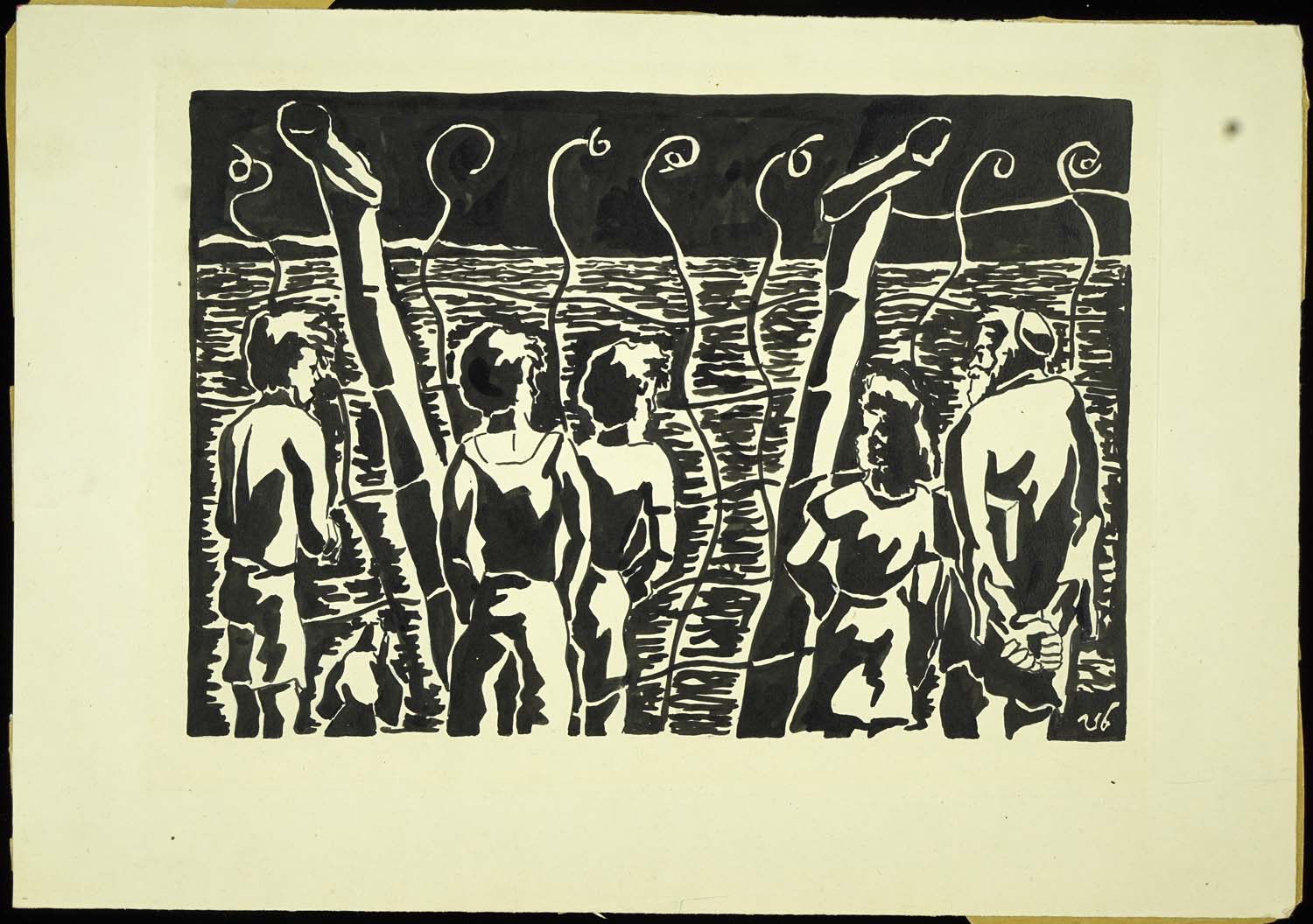
Through the detailed examination of a rare album created in the British detention camps on Cyprus, the project helped us in a unique way to understand artifact provenance. The album, consisting of linocuts and prints, made by students of the JDC-funded Rutenberg Seminar, c. 1948, highlights the human experience within the camps, not always visible within reports discussing camp population statistics, living conditions, and program initiatives. JDC provided humanitarian assistance for the refugees in the form of food rations, clothing, medical care, vocational training programs, educational programs and religious materials. The internees also took part in art seminars supported by the JDC and presented this album to JDC as a token of thanks. Though we knew that the album featured different types of prints, the meticulous measurement of each page and observation of varying conditions from page to page convinced us that the album had been dismantled, possibly for an exhibition. When the album was reassembled, it became an amalgamation of prints, including some that were not original to the album. Understanding the album’s history further helped us to properly preserve the item, particularly because pages were of differing sizes and conditions due to their varied administrative history.
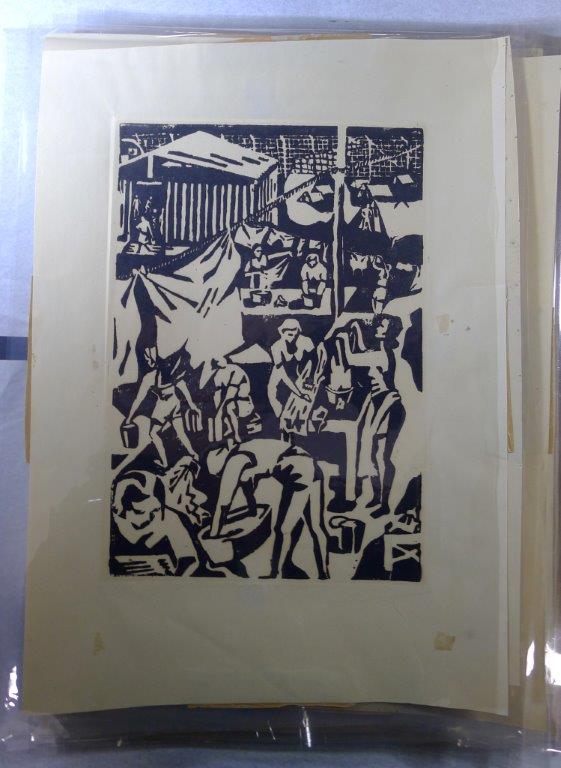
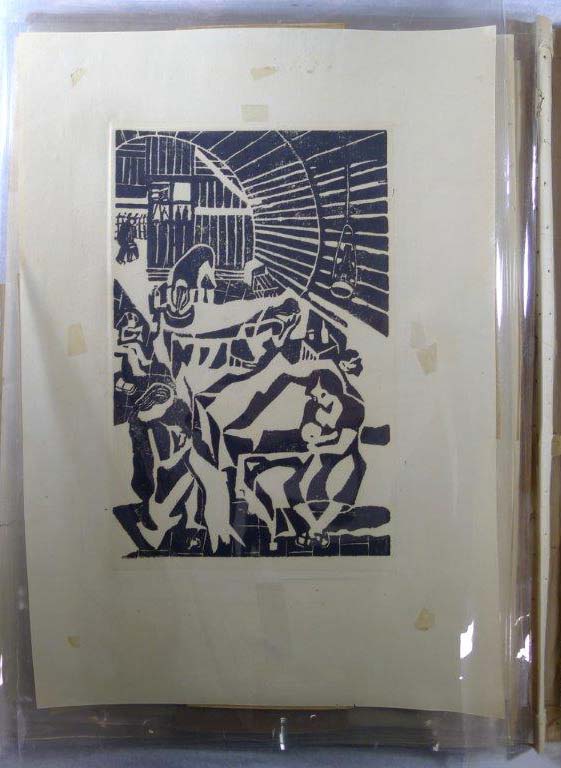

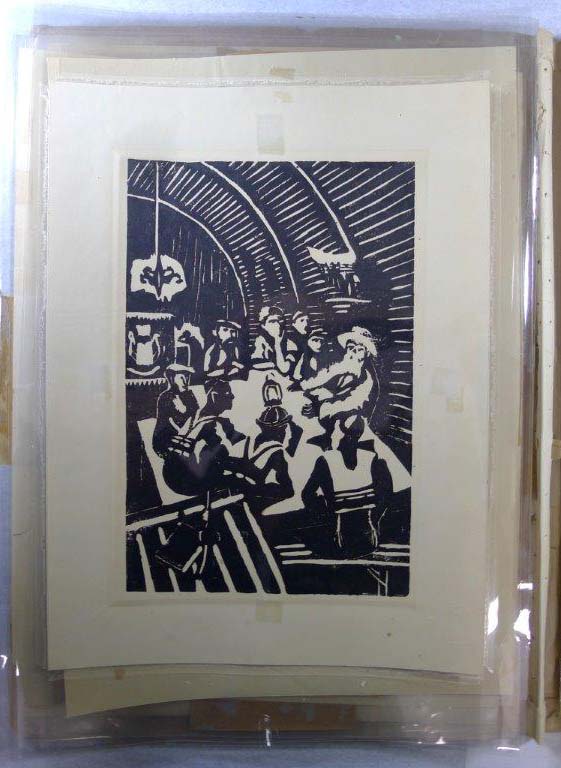
In consultation with the paper conservator, JDC Archives staff were then able to properly store the album. The rehousing entailed several crucial steps:
- Because many pages of the album were brittle and torn, buffered paper was cut according to print size and placed behind the prints for added stability. When placing the buffered paper behind the prints, it was important that the paper should fill the mylar to its edges and that the actual prints should be centered within the mylar itself. The mylars used were self-sealing archival polyester l-velopes, which offer additional support while restricting movement.
- The prints were of varying sizes, so they required different sized mylars, which meant that the prints also needed to be stacked according to mylar size. After rehousing in the pertinent mylars, the prints were stacked according to size within the album cover, offering additional support for the fragile cover.
- Several prints that were previously encapsulated in thick mylar enclosures with double-stick tape were rehoused in new mylars, since the prints risked damage from the adhesive.
- Lastly, the album was placed in an acid-free storage box, of appropriate dimension.

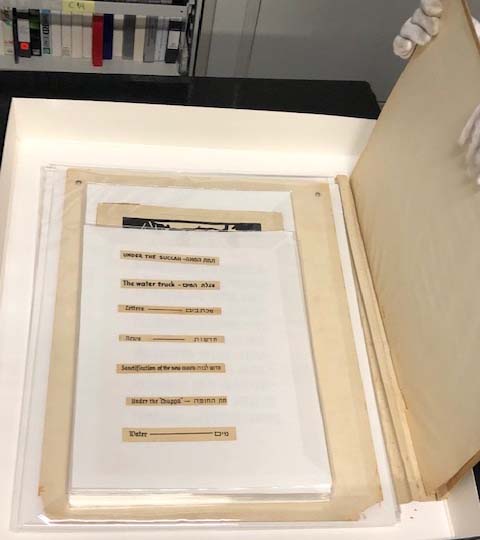
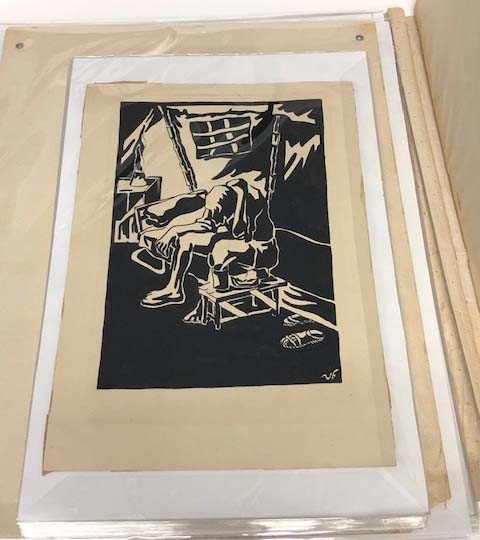
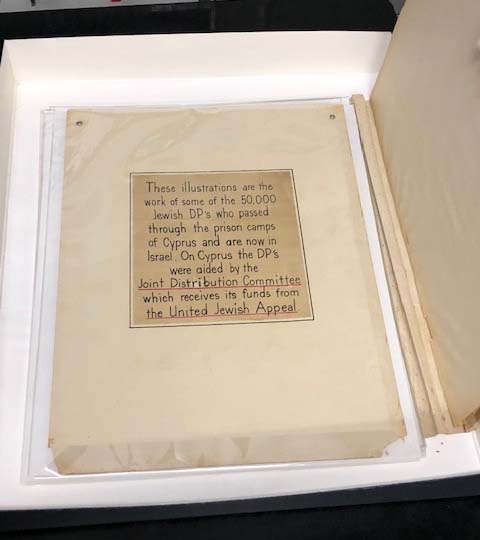
Now, the artifact has been preserved for use by future generations. This is particularly important, because the item has a special ability to illustrate history in multi-dimensional ways for wider audiences. In fact, another Cyprus album that contains many of the same prints as our own was on display at the Eretz Israel Museum in Tel Aviv, in their exhibit “Cyprus, the Art of Life: The Detention Camps, 1946-1949.” As obvious from its exhibition history, materials such as these require the most optimal conditions rendering them more accessible for potential display and exposure to the general public.
Discover the many treasures of the Artifacts and Ephemera Collection today: https://archives.jdc.org/our-collections/artifacts-ephemera-collection/.
